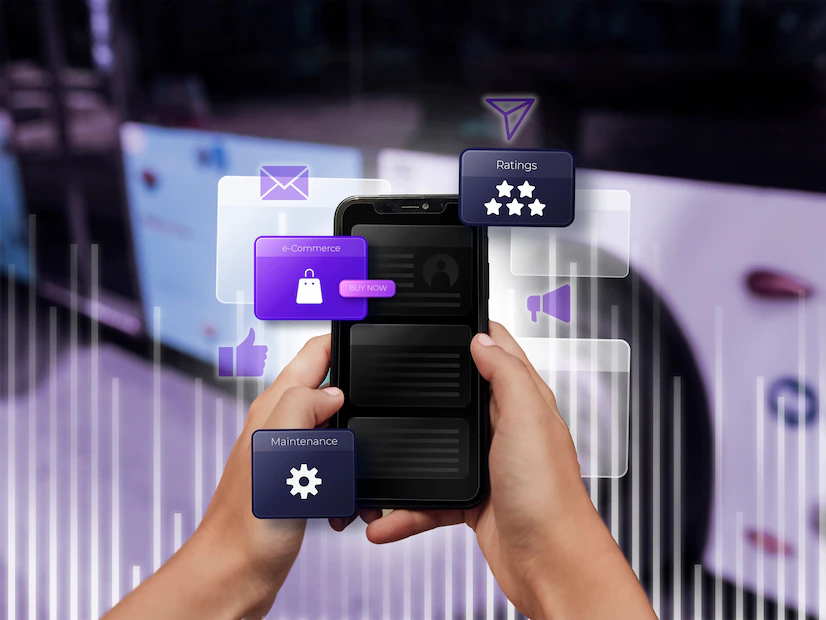User Acceptance Testing With Real Devices Vs Emulators
August 22, 2023

toc impalement
User Acceptance Testing (UAT) is a crucial stage in software development in which end users analyze the system’s functionality to ensure it fulfills their expectations. Automation testing, on the other hand, executes test cases using specialized tools and scripts. When it comes to UAT, testers have two choices: genuine devices or emulators. In this post, we will focus at the distinctions between these two methodologies, their benefits and drawbacks, and their impact on the UAT process.
Understanding User Acceptance Testing


User Acceptability Testing (UAT), the last stage of software testing, is carried out prior to the product’s public release. User acceptability testing (UAT)’s main goal is to confirm that the system meets users’ expectations for usability, functionality, and performance.
Real Devices In UAT
Real devices refer to physical smartphones, tablets, or other gadgets that are used for testing purposes. They offer a true representation of the user experience as they operate on actual hardware and OS configurations.
Advantages Of Real Devices:
- Realistic Testing: Testing on real devices provides an accurate representation of how the application will perform in the hands of real users, capturing potential device-specific issues.
- Network Conditions: Real devices allow testers to assess the application’s behavior under various network conditions, such as 3G, 4G, or Wi-Fi, ensuring smooth functioning in different scenarios.
Disadvantages Of Real Devices:
- Costly Setup: Acquiring a diverse range of real devices for testing can be expensive, as it requires purchasing multiple devices with different OS versions and screen sizes.
- Limited Scalability: When working with a lot of test cases or devices, running tests on real devices can be time-consuming and restrict scalability.
3. Emulators In UAT
Emulators are software applications that mimic the behavior of real devices on a computer. They provide a virtual environment for testing, allowing testers to execute test cases without needing physical devices.
Advantages Of Emulators:
- Cost-Effectiveness: Emulators eliminate the need for purchasing and maintaining a wide range of physical devices, reducing overall testing costs.
- Quick Setup: Emulators can be set up easily and provide instant access to different device configurations, OS versions, and screen sizes, accelerating the testing process.
Disadvantages Of Emulators:
- Limited Realism: Emulators may not always accurately replicate real-world device behavior, leading to potential discrepancies between the emulator and real device testing results.
- Performance Variations: Emulators might not fully reflect the performance of actual devices, leading to potential issues being overlooked during testing.
Consider using LambdaTest in your testing inventory for a more comprehensive UAT strategy. LambdaTest simplifies UAT by making a actual devices and emulators available on a cloud-based platform, guaranteeing full coverage across several situations. Real devices or emulators should be chosen based on the project’s specific objectives and desired testing accuracy. By staying updated on industry trends and best practices, testing teams can make informed decisions and deliver high-quality software products that meet end-users expectations.
Impact On Automation Testing
Automation testing involves using scripts to execute test cases, making it more efficient and consistent compared to manual testing. The choice between real devices and emulators significantly impacts the automation testing process.
Impact Of Real Devices On Automation Testing:
- Comprehensive Testing: Automation tests run on real devices ensure thorough testing of hardware-related functionalities and performance.
- Accurate Real-World Results: Running automation tests on real devices generates accurate real-world results, ensuring better confidence in the application’s stability.
- Device Farm Integration: Cloud-based device farms can be utilized to conduct parallel testing on multiple real devices, enhancing the scalability of automated tests.
Impact Of Emulators On Automation Testing:
- Faster Test Execution: Emulators facilitate faster test execution as they eliminate the setup time required for physical devices.
- Simplified Maintenance: Emulators offer a standardized testing environment, simplifying maintenance efforts and ensuring consistent testing across various devices.
- Continuous Integration: Emulators seamlessly integrate with continuous integration tools, enabling frequent automated tests during development.
Addressing Challenges And Best Practices For Real Devices In UAT
Real devices unquestionably offer a more realistic testing setting, but they also present their own set of difficulties. Here are some top techniques for overcoming these difficulties:
- Device Selection: Testers should prioritize the most popular devices among their target audience to ensure broad coverage while testing on real devices. Utilizing market research and analytics data can aid in this process.
- Cloud-Based Device Farms: Cloud-based testing platforms like AWS Device Farm, BrowserStack, and Sauce Labs offer an extensive range of real devices and OS versions that testers can access remotely, reducing the costs associated with device procurement and maintenance.
- Automated Device Management: Implementing automated device provisioning and configuration management tools can streamline the process of setting up test environments on real devices, saving time and effort.
- Crowd Testing: Crowd testing involves outsourcing UAT to a pool of real-world users who test the application on their own devices. This approach provides valuable feedback from diverse perspectives and helps identify critical issues that might be missed in a controlled testing environment.
Overcoming Limitations And Embracing Emulators In UAT
Emulators provide a more cost-effective and scalable testing solution, making them increasingly popular in automation testing. To maximize their effectiveness, consider these best practices:
- Emulator Selection: Choose emulators that accurately simulate target devices and OS versions. Regularly update the emulators to match the latest releases and patches.
- Performance Testing: Emulators might not always replicate the performance of real devices accurately. It’s essential to supplement emulator testing with performance testing on real devices to ensure optimal user experience.
- Integration Testing: Combine emulator testing with integration testing to validate the application’s behavior when interacting with various hardware components and peripherals.
- Parallel Testing: Leverage the capability of emulators to conduct parallel testing, where multiple test cases are executed simultaneously, reducing test cycle time.
Trends In UAT: Real Devices And Emulators
As technology continues to evolve, trends in UAT are influenced by the latest advancements. Here are some notable trends in the use of real devices and emulators for UAT:
- Hybrid Testing: Testers are increasingly adopting a hybrid approach that combines real devices and emulators. This approach maximizes test coverage, balancing the benefits of realism and scalability.
- AI-Driven Testing: Artificial Intelligence (AI) is revolutionizing testing by automating test case generation, execution, and analysis. AI-powered tools can enhance both real device and emulator testing by identifying critical test scenarios and generating test data.
- 5G Testing: With the global rollout of 5G networks, testing applications on real 5G devices becomes crucial to ensure optimal performance and user experience.
- IoT Device Testing: The rise of Internet of Things (IoT) devices requires UAT to encompass testing on a diverse range of devices, both real and virtual, to ensure seamless interoperability.
Specific Use Cases For Real Devices In UAT
Real devices are invaluable for testing scenarios that require a high level of accuracy and realism. Here are some specific use cases where real devices excel:
- Location-Based Services: Applications relying on GPS or location-based functionalities must be tested on real devices to ensure accurate positioning and responsiveness to location changes.
- Device-Specific Features: Some applications utilize device-specific features like fingerprint sensors, device cameras, or accelerometers. Real devices are essential for verifying the proper functioning of such features.
- Network Performance: Real devices enable testers to assess the application’s behavior under different network conditions, helping identify potential performance bottlenecks and connectivity issues.
- Multitasking and Interruptions: Real devices allow testers to evaluate how the application behaves when interrupted by incoming calls, notifications, or other background processes.
Emulators have a number of advantages that make them an appealing UAT option, but they also have significant drawbacks. The followings are the benefits and drawbacks of utilizing emulators:
Advantages Of Emulators:
- Cost-Effectiveness: Emulators eliminate the need to purchase and maintain a wide range of physical devices, reducing overall testing costs significantly.
- Time Efficiency: Emulators allow testers to run tests simultaneously on multiple virtual devices, speeding up the test execution process.
Disadvantages Of Emulators:
- Realism Limitations: Emulators may not fully replicate the hardware and software intricacies of real devices, leading to potential discrepancies in test results.
- Performance Variations: Emulators might not accurately represent the performance of actual devices, potentially missing performance-related issues.
Creating An Effective UAT Strategy Using Real Devices And Emulators
To make the most of both real devices and emulators in UAT, it’s essential to create a comprehensive testing strategy. Here’s how to build an effective UAT strategy that leverages both approaches:
- Requirement Analysis: Understand the application’s target audience, use cases, and device compatibility requirements. Identify critical features that demand real-device testing and those that can be adequately validated through emulators.
- Device Selection Criteria: Develop a device selection matrix based on market share, user preferences, and supported OS versions to choose a representative set of real devices.
- Test Scenarios: Divide test scenarios into those that need real-device testing and those that can be executed on emulators. This ensures a balanced approach for comprehensive coverage.
- Parallel Testing: Embrace parallel testing by running tests concurrently on multiple emulators, optimizing test cycle time, and improving testing efficiency.
- Continuous Integration: Integrate real devices and emulators into the continuous integration process to enable frequent and automated UAT runs during development.
- Bug Reporting and Tracking: Use bug tracking tools to monitor issues found during real-device and emulator testing, allowing efficient collaboration among testers and developers.
- Real-World Environment Simulation: For emulator testing, try to replicate real-world conditions by simulating various network types and speeds to identify potential performance issues.
Industry Trends And Future Directions
The field of UAT is continually evolving, driven by technological advancements and changing user expectations. Here are some industry trends and future directions to keep an eye on:
- Virtual Reality (VR) and Augmented Reality (AR) Testing: As VR and AR technologies gain prominence, UAT will require a combination of real devices and specialized emulators to validate these immersive experiences.
- Voice Assistant Testing: With the increasing integration of voice assistants in applications, UAT will need to include real devices to assess voice recognition accuracy and user interaction.
- AI-Enhanced Emulators: Emulators enhanced with AI capabilities will become more prevalent, improving their ability to mimic real device behavior and performance accurately.
Conclusion:
User Acceptance Testing is a critical phase in software development, and choosing the right approach between real devices and emulators plays a vital role in its success. Real devices offer unparalleled realism, enabling testers to capture device-specific issues, while emulators provide cost-effectiveness and scalability.
To optimize UAT in automation testing, testing teams can leverage the strengths of both approaches through hybrid testing strategies. Combining real devices and emulators, along with adopting emerging trends like AI-driven testing and 5G/IoT device testing, will enhance the overall quality and usability of the software being tested.
ead Also:


















Comments Are Closed For This Article